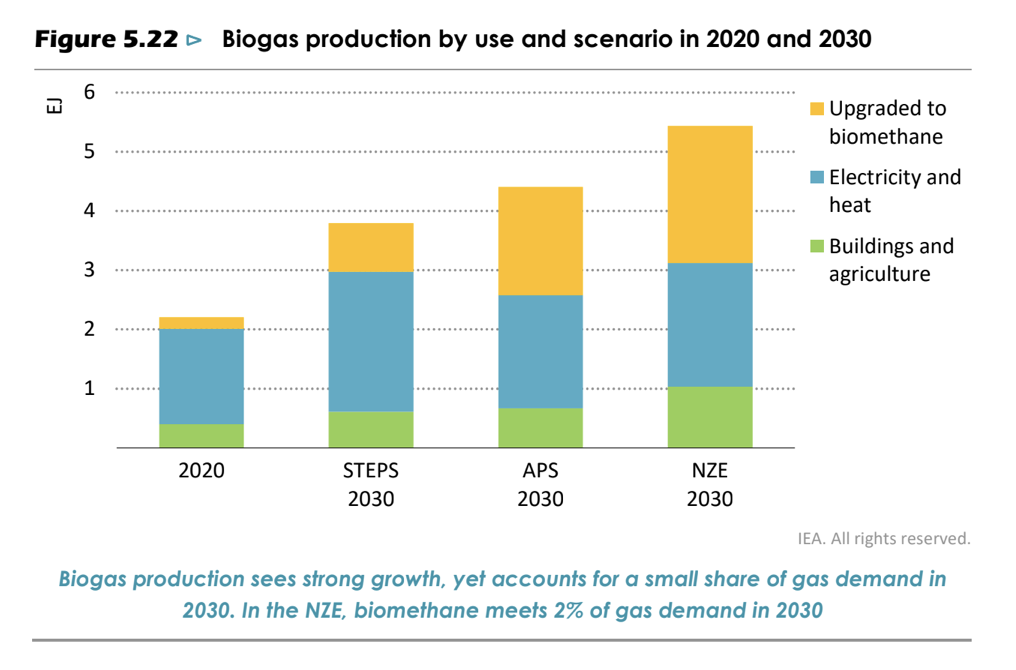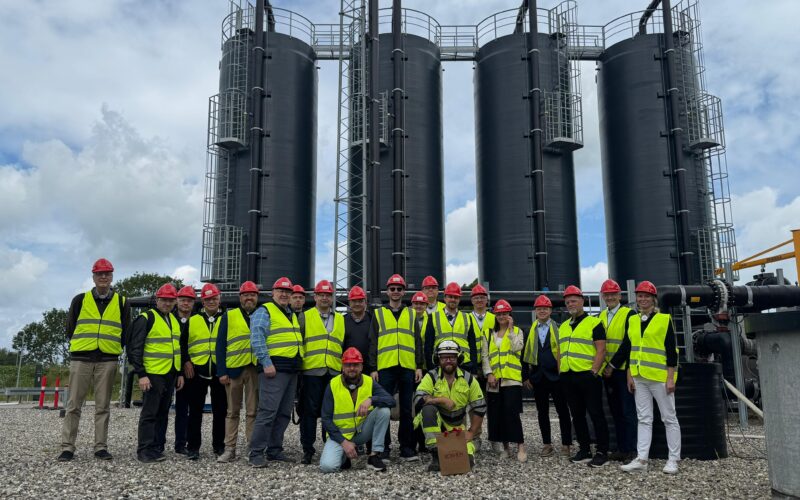The share of biogas will continue to grow in all sectors of consumption: IEA views
International Energy Agency (IEA) in the analytical report “World Energy Outlook 2021” considered several scenarios for the development of the world energy sector:
- APS – Announced Pledges Scenario;
- STEPS – Stated Policies Scenario;
- NZE – Net Zero Emissions by 2050 Scenario.
We propose to consider the IEA’s views on the development of biogas and biomethane.
Every part of the world has significant opportunities for biogas and biomethane production, but recently they do not have widespread political support in the world, unlike hydrogen.
Reasons for insufficient political attention to biomethane
- The relatively high initial cost of biogas plants construction and the problems of maintenance of small biogas plants over long distances have slowed down the development of this strategic direction.
- There are problems with the cost and availability of biomethane, and a number of non-economic barriers need to be overcome, including finding the right amount of raw materials of stable quality. However, the global potential is significant.
Expert assessment of the potential of sustainable raw materials shows that about 25 EJ of biomethane could be obtained worldwide, as well as another 7 EJ of biomethane from biomass gasification. At today natural gas prices, about a quarter of this potential is competitive in value.
About 70% of the biogas produced today are used for electricity and heat production, 20% for cooking, and the other 10% is used for biomethane.
More than half of biogas is currently produced in Asia, which also has the greatest growth potential due to the availability of significant amounts of organic raw materials, such as crop residues and organic waste.
We offer to see a diagram of future scenarios of biogas production/use in 2020 and 2030.

Biogas projects not only help reduce greenhouse gas emissions but also contribute to rural development and job creation.
Scenario overview
Until 2030
Biogas production is growing rapidly, but it will still account for a small share of gas demand in 2030. In the NZE scenario, biomethane meets 2% of gas demand in 2030.
- By 2030, under the STEPS scenario, biogas production will almost double, especially in China, Europe, India, and the United States. About 20% of biogas production in 2030 will be converted into biomethane, which will be mostly used in industry and transport.
- In the APS scenario, biogas consumption will increase to 4 EJ in 2030 as countries seeking zero emissions will expand subsidies and pursue more ambitious targets for blending biomethane with natural gas. Growth rates will depend on increasing the competitiveness of biomethane, developing low-carbon gas certification schemes, commitments of mixing and ensuring priority access to gas infrastructure.
- In the NZE scenario, the need to ensure universal access to clean cooking by 2030 will boost biogas development in emerging economies.
After 2030
- After 2030, according to the STEPS scenario, biomethane consumption will continue to increase to 5 EJ and 3% of global gas demand by 2050.
- In the APS scenario, biogas will account for about 8 EJ and more than 5% of global gas demand. In Europe, the use of biomethane will expand significantly in areas where emission reductions will be particularly difficult.
- In NZE the share of biomethane will increase, in certain regions. The percentage of mixing will reach 20-40%. However, only a quarter of the overall potential for sustainable development will be achieved; much things remains too expensive to develop, and biogas and biomethane will compete for support with other types of bioenergy.
Source: World Energy Outlook 2021. International Energy Agency. 2021.


